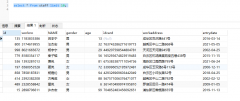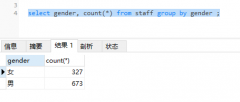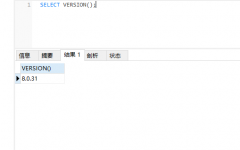Install MySQL with ansible on ubuntu(在 ubuntu 上使用 ansible 安装 MySQL)
问题描述
我在流浪的 ubuntu 上安装带有 ansible 的 MySQL 时遇到问题,
I have a problem installing MySQL with ansible on a vagrant ubuntu,
这是我的 MySQL 部分
This is my MySQL part
---
- name: Install MySQL
apt:
name: "{{ item }}"
with_items:
- python-mysqldb
- mysql-server
- name: copy .my.cnf file with root password credentials
template:
src: templates/root/.my.cnf
dest: ~/.my.cnf
owner: root
mode: 0600
- name: Start the MySQL service
service:
name: mysql
state: started
enabled: true
# 'localhost' needs to be the last item for idempotency, see
# http://ansible.cc/docs/modules.html#mysql-user
- name: update mysql root password for all root accounts
mysql_user:
name: root
host: "{{ item }}"
password: "{{ mysql_root_password }}"
priv: "*.*:ALL,GRANT"
with_items:
- "{{ ansible_hostname }}"
- 127.0.0.1
- ::1
- localhost
我有这个错误
failed: [default] => (item=vagrant-ubuntu-trusty-64) => {"failed": true, "item": "vagrant-ubuntu-trusty-64"}
msg: unable to connect to database, check login_user and login_password are correct or ~/.my.cnf has the credentials
failed: [default] => (item=127.0.0.1) => {"failed": true, "item": "127.0.0.1"}
msg: unable to connect to database, check login_user and login_password are correct or ~/.my.cnf has the credentials
failed: [default] => (item=::1) => {"failed": true, "item": "::1"}
msg: unable to connect to database, check login_user and login_password are correct or ~/.my.cnf has the credentials
failed: [default] => (item=localhost) => {"failed": true, "item": "localhost"}
msg: unable to connect to database, check login_user and login_password are correct or ~/.my.cnf has the credentials
我的 .my.cnf 是
my .my.cnf is
[client]
user=root
password={{ mysql_root_password }}
当复制到服务器上时
[client]
user=root
password=root
我不明白为什么,创建了 ~/.my.cnf
I don't understand why, ~/.my.cnf is created
项目 Github
谢谢
推荐答案
当 mysql-server 无头安装时,没有密码.因此,要使 .my.cnf 工作,它应该有一个空白的密码行.这是我为 .my.cnf 测试的内容:
When mysql-server is installed headlessly, there's no password. Therefore to make .my.cnf work, it should have a blank password line. Here's what I tested with for a .my.cnf:
[client]
user=root
password=
将 .my.cnf 放在您的 vagrant 用户目录中也有点奇怪,因为它由 root 拥有并且只能作为 root 读取.
It's also slightly strange to put .my.cnf in your vagrant user directory as owned by root and only readable as root.
确保 .my.cnf 中的密码为空后,我能够在这四个上下文中正确设置 root 的密码.请注意,此后它无法运行,因为需要更新 .my.cnf,因此它无法通过幂等性测试.
After ensuring the password was blank in .my.cnf, I was able to properly set the password for root in those four contexts. Note that it fails to run after that, since .my.cnf would need to be updated, so it fails the idempotency test.
ansible mysql_user 模块页面上有一条注释,建议先写密码,然后然后写.my.cnf 文件.如果你这样做,你需要一个 where 子句到 mysql_user 操作(可能在此之前有一个文件统计信息).
There's a note on the ansible mysql_user module page that suggests writing the password and then writing the .my.cnf file. If you do that, you need a where clause to the mysql_user action (probably with a file stat before that).
更优雅的是将 check_implicit_admin 与 login_user 和 login_password 一起使用.这真是幂等的.
Even more elegant is to use check_implicit_admin along with login_user and login_password. That's beautifully idempotent.
作为第三种方式,也许 check_implicit_admin 会更容易.
As a third way, perhaps check_implicit_admin makes it even easier.
这是我成功的剧本,展示了上述内容,并在几台新服务器上进行了测试.有点为此感到自豪.注意所有这些都不需要 .my.cnf.
Here's my successful playbook showing the above, tested with a few fresh servers. Kinda proud of this. Note .my.cnf is unnecessary for all of this.
---
- hosts: mysql
vars:
mysql_root_password: fart
tasks:
- name: Install MySQL
apt: name={{ item }} update_cache=yes cache_valid_time=3600 state=present
sudo: yes
with_items:
- python-mysqldb
- mysql-server
#- name: copy cnf
# copy: src=.my.cnf dest=~/.my.cnf owner=ubuntu mode=0644
# sudo: yes
- name: Start the MySQL service
sudo: yes
service:
name: mysql
state: started
enabled: true
- name: update mysql root password for all root accounts
sudo: yes
mysql_user:
name: root
host: "{{ item }}"
password: "{{ mysql_root_password }}"
login_user: root
login_password: "{{ mysql_root_password }}"
check_implicit_admin: yes
priv: "*.*:ALL,GRANT"
with_items:
- "{{ ansible_hostname }}"
- 127.0.0.1
- ::1
- localhost
(编辑-删除了 my.cnf)
(edit- removed my.cnf)
这篇关于在 ubuntu 上使用 ansible 安装 MySQL的文章就介绍到这了,希望我们推荐的答案对大家有所帮助,也希望大家多多支持编程学习网!
本文标题为:在 ubuntu 上使用 ansible 安装 MySQL


基础教程推荐
- 带有WHERE子句的LAG()函数 2022-01-01
- 使用 VBS 和注册表来确定安装了哪个版本和 32 位 2021-01-01
- MySQL 5.7参照时间戳生成日期列 2022-01-01
- ORA-01830:日期格式图片在转换整个输入字符串之前结束/选择日期查询的总和 2021-01-01
- CHECKSUM 和 CHECKSUM_AGG:算法是什么? 2021-01-01
- 从字符串 TSQL 中获取数字 2021-01-01
- 如何在 CakePHP 3 中实现 INSERT ON DUPLICATE KEY UPDATE aka upsert? 2021-01-01
- MySQL根据从其他列分组的值,对两列之间的值进行求和 2022-01-01
- 带更新的 sqlite CTE 2022-01-01
- while 在触发器内循环以遍历 sql 中表的所有列 2022-01-01

















